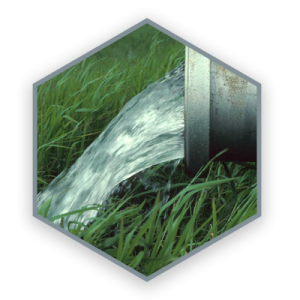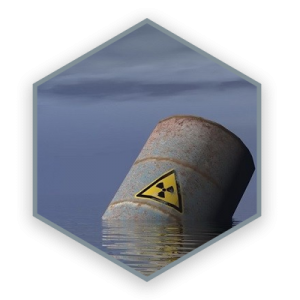Water treatment
Water treatment for drinking purposes
Clinoptilolithic zeolite can be used for drinking-water treatment of groundwater and surface water as well.
In modern processes of deferment and demanganization, zeolites can function simultaneously as the oxidation and filtration medium. Clinoptilolytic zeolite has a high absorption capacity for some organic microporous, which recommends it in the surface water treatment process for the purpose of potable water.
A concrete example of the deferment and demagnetization of drinking water is the project we run with the Târgu Secuiesc drinking water treatment plant where we managed to reduce the iron concentration from 6.8 mg / l to 0.02 mg / l and manganese from 0.193 mg / l to 0.07 mg / l.
Zeolite volcanic tuffs can be used as a coagulation adjuvant in the treatment of drinking water. Also, zeolite volcanic tuffs can be used as a filtering material in the water potting process with high efficiency in retention of organic water load compared to quick sand filters.
The zeolite softening process, similar to glauconite sand, has the advantage that a solution of sodium chloride, whose cost price is low, is used to regenerate ion exchangers. The process is very effective in the case of waters with a high temporary hardness compared to permanent hardness.
Sewage treatment
For the treatment of industrial waste water, technological processes appropriate to the nature of the pollutants and the characteristics of waste water are used. In the advanced waste water treatment phase, ion exchange was imposed as a specific technological process. In addition to the fact that ion exchange allows advanced wastewater treatment, in the regeneration process, heavy metal ions can be retained as useful products.
The use of natural zeolites with high ion exchange capacity in advanced wastewater treatment processes with heavy metal ions is an efficient and perspective method. Exhausted zeolites can be used for other purposes without causing environmental pollution.
Natural zeolites are used in the treatment of waste water in the chemical, pharmaceutical, food, metallurgical, and urban wastewater treatment.
Residual waters of different origin and with different impurities, contain organic pollutants and inorganic salts with interchangeable cations: NH4 +, Cu2 +, Pb2 +, Zn2 +, Cd2 + etc.
The problem of removal or reduction of ammonia concentration in wastewater is closely related to maintaining ecological balance. The special selectivity of natural zeolites of the clinoptilolithic type for ammonium ion allowed them to be used in the process of purifying waste water containing ammonia.
In many countries, experiments on zeolite volcanic tuffs have taken place to contain cations of heavy metals from solutions.
Decontamination of radioactive waters
The development of nuclear research and multiple applications of radioactive isotopes have posed a number of problems in the field of waste water treatment containing radioactive substances.
Natural zeolites, particularly clinoptilolite, have been widely used in the field of waste water treatment containing radioactive isotopes: 134Cs +, 137Cs +, 90Sr2 +, Th4 +, U6 +. Once saturated with cesium, clinoptilolite can be stored for a long time under optimum conditions view of radioactivity. Cesium from such stocks can be chemically recovered, in which case clinoptilolite can be considered as reusable.
Through repeated research and experiments, it has been demonstrated that by addition of clinoptilolite tuff to solutions contaminated with strontium radioactive isotope (90Sr), the degree of pollution and the taking of this harmful element by plants is significantly reduced. In this way clinoptilolite can constitute and become an important factor in limiting and combating the polluting effects of "radioactive pollution" on crops or pastures.
Radionuclide retention capacity or radioactive decontamination using zeolite volcanic tuffs is the result of their intrinsic properties, among which the most prominent are the radionuclide adsorption capacity of the solutions, the ion exchange capacity, the selective character of this exchange and the resistance to irradiation degradation .





